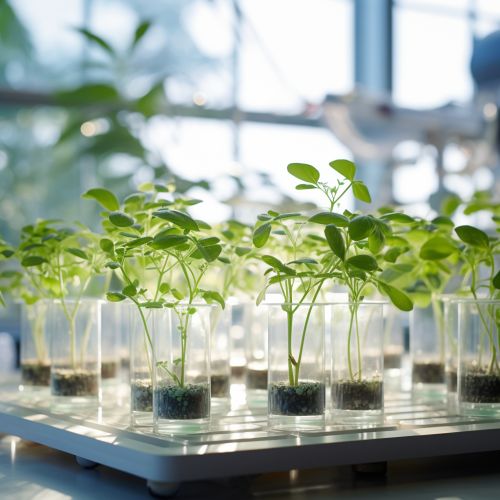Tissue culture
Introduction
Tissue culture, also known as micropropagation, is a technique used in molecular biology and botany that involves the growth of tissues or cells separate from the organism. This method is often used to propagate plants under sterile conditions, leading to the production of clones of a plant in a method known as micropropagation.
History
The concept of tissue culture was first introduced in the early 20th century when Gottlieb Haberlandt, a German botanist, attempted to culture plant tissues. His experiments paved the way for future research in the field, leading to the development of modern tissue culture techniques.


Types of Tissue Culture
There are several types of tissue culture techniques, including organ culture, cell culture, and tissue culture.
Organ Culture
In organ culture, whole organs are removed from the plant or animal and then grown in a nutrient medium. This allows for the study of the organ in a controlled environment, separate from the rest of the organism.
Cell Culture
Cell culture involves the disassociation of cells from a tissue and their subsequent growth in a nutrient medium. This technique is often used in cancer research and in the production of biopharmaceuticals.
Tissue Culture
Tissue culture is the growth of tissues or cells in an artificial medium separate from the parent organism. This technique is often used in plant propagation and is also used in cellular agriculture to produce cultured meat.
Process of Tissue Culture
The process of tissue culture involves several steps, including the selection of plant material, sterilization, explant preparation, inoculation, incubation, and subculturing.
Selection of Plant Material
The first step in tissue culture is the selection of plant material. The plant material, also known as the explant, can be any part of the plant, such as a leaf, stem, or root.
Sterilization
The explant must be sterilized to remove any microorganisms. This is typically done using a solution of sodium hypochlorite or calcium hypochlorite.
Explant Preparation
The explant is then cut into small pieces and placed in a growth medium. The growth medium provides the nutrients necessary for the explant to grow.
Inoculation
The explant is then placed in a culture vessel and the growth medium is added. The culture vessel is then sealed to prevent contamination.
Incubation
The culture vessel is placed in an incubator, where it is kept at a constant temperature and light intensity. The explant will begin to grow and divide, forming a callus.
Subculturing
Once the callus has formed, it can be subcultured. This involves removing a portion of the callus and placing it in a new culture vessel with fresh growth medium.
Applications of Tissue Culture
Tissue culture has a wide range of applications in various fields, including plant propagation, genetic engineering, and medicine.
Plant Propagation
Tissue culture is commonly used in plant propagation to produce large numbers of identical plants. This is particularly useful for plants that are difficult to propagate by other means, such as orchids and rare plants.
Genetic Engineering
Tissue culture is also used in genetic engineering, where it is used to create genetically modified organisms. The cells of the tissue culture can be genetically modified, and then the modified cells can be grown into a whole plant.
Medicine
In medicine, tissue culture is used in the production of vaccines and other pharmaceuticals. It is also used in research to study the effects of drugs on cells.
Challenges and Limitations
While tissue culture is a powerful tool, it is not without its challenges and limitations. These include the risk of contamination, the high cost of equipment and materials, and the need for skilled personnel.
